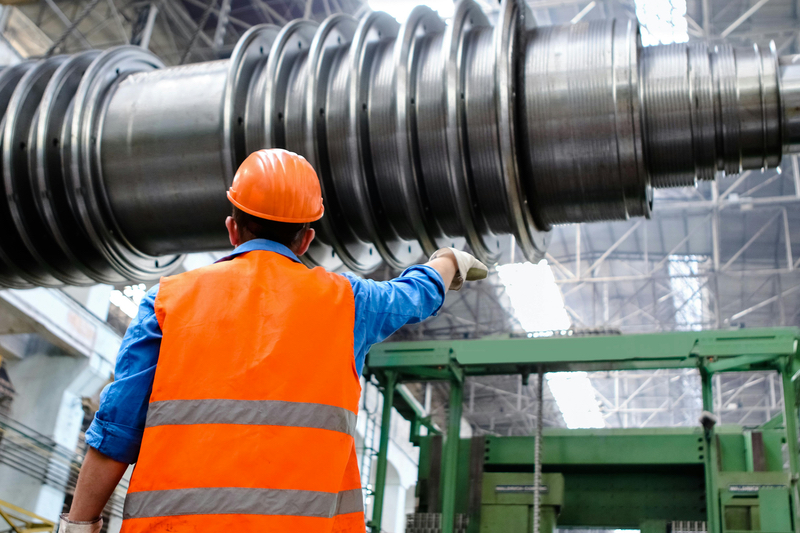In the pharmaceutical manufacturing environment, downtime and inefficiencies during day-to-day operation can equate to significant financial losses while also impacting the valuable time of staff who must tend to these setbacks. Therefore, it’s essential that businesses try to limit the impacts of these phenomena as much as possible.
Implementing predictive and preventive maintenance (PPM) into manufacturing protocols has escalated from an option to a necessity for companies who want to keep up with their competitors throughout the pharmaceutical industry.
This integrated strategy not only enhances the reliability and performance of equipment, but also extends its operational life — ensuring that the manufacturing process is both efficient and durable.
Manufacturing Chemist spoke to Roger Savo, the European Aftermarket Director at ELGi, to find out more.
What is predictive maintenance?
Predictive maintenance is an advanced strategy that leverages data analytics, machine learning and sensor technologies to predict and prevent equipment failures before they occur.
Unlike previous industry standard approaches, such as reactive maintenance (fixing issues after they’ve occurred) or preventive maintenance (tending to equipment routinely, regardless of condition), predictive measures focus on data-driven insights to optimise maintenance schedules and maximise equipment uptime and reliability.
New technologies that bolster department connectivity within the manufacturing process play a crucial role in terms of driving the efficiency of predictive maintenance. By integrating sensors and networks with analytics and augmented intelligence tools, PPM can offer more accurate predictions and real-time insights.
Smart technology integrations allow for “always on” agility, such that unforeseen machinery conditions can be addressed promptly, thereby mitigating potential damage and optimising decision making processes. Connectivity facilitates a comprehensive data exchange, enhancing the predictive analysis and enabling more informed strategic decisions to be made regarding asset maintenance.
Manufacturers can use predictive algorithms to forecast any machine failures
How predictive maintenance operates
Beginning with continuous monitoring and data collection, the PPM process involves several stages. Next, the collated data needs to be analysed using statistical techniques and machine learning.
This then allows businesses to detect anomalies in their figures, which can help to identify potential issues. From the data collected, manufacturers can also use predictive algorithms to forecast any machine failures and decide on maintenance action, allowing these tasks to be executed before failures occur.
The key components of PPM systems
Implementing preventive maintenance requires a strategic approach that’s underpinned by several key components:
- Advanced sensor technology: IoT sensors are crucial for the real-time monitoring of equipment conditions, providing the data necessary for predictive analysis
- Data analytics and artificial intelligence (AI): the heart of PPM lies in data analytics and AI algorithms that process the information collected by sensors to identify patterns, predict potential failures and suggest preventive measures
- Skilled workforce: a workforce skilled in data analysis, machine learning and the operation of sophisticated monitoring equipment is essential to interpret data and implement maintenance strategies effectively
- Cultural shift: embracing PPM requires a cultural shift within the organisation, moving from a reactive to a proactive maintenance mindset; this involves training, change management and ongoing support.
The benefits of implementing PPM methodology
The rationale to adopt PPM within business operations can be highlighted by its significant benefits, which include the following.
Downtime minimisation
Unplanned downtime can have a significant impact on the productivity of a manufacturing facility. The adoption of predictive maintenance has been linked to a notable reduction in this phenomenon — enhancing the site’s overall output. Connected technologies facilitate the predictive maintenance process, allowing for real-time insights and the efficient deployment of maintenance resources.
According to Deloitte Analytics Institute’s position paper on predictive maintenance, this efficiency translates into a 20–50% reduction in maintenance planning time, a 10–20% increase in equipment uptime and a 5–10% reduction in overall maintenance costs.1
Cost reduction
PPM can significantly lower maintenance costs as it allows manufacturers to identify issues before they escalate into costly repairs or complete equipment replacements. By optimising maintenance schedules, companies can avoid fixing issues that were easily avoidable, saving on both labour and parts.
According to Advanced Technology Services (ATS), predictive maintenance provides cost savings of 8–12% compared with preventive and up to 40% compared with reactive maintenance.2 
Roger Savo, the European Aftermarket Director at ELGi
Equipment life extension
Regular and precise maintenance can help to extend the operational lifespan of machinery. According to research by McKinsey, predictive measures can lead to a reduction in machine downtime by up to 50% whilst increasing machine life by up to 40%.3
With these types of savings, companies can defer capital expenditures on new equipment and get the best return on their
previous equipment investments.
Identifying and addressing potential equipment ... can minimise the risk of accidents
Enhancing safety and compliance
Implementing PPM strategies into the manufacturing workflow can also enhance the workplace environment and ensure compliance with safety regulations. By proactively identifying and addressing potential equipment failures before they occur, businesses can minimise the risk of accidents.
This approach not only protects the workforce but also helps companies to adhere to stringent safety standards and avoid the legal and financial penalties associated with non-compliance.
Operational efficiency
With PPM measures in place, companies can benefit from an increase in operational efficiency owing to a reduction in general wear and tear. If data is collected and analysed correctly and maintenance tasks are performed in time, manufacturers can reduce the prevalence of the day-to- day damage that occurs to equipment with consistent use … potentially improving its overall performance. Having reliable machinery for drug manufacturing is key, and PPM can help to maintain its operational efficiency throughout its lifecycle.

Staying ahead of the curve
The implementation of predictive and preventive maintenance has become more than best practise; it’s now a strategic imperative for companies aiming to thrive in the competitive and dynamic landscape of Pharma 5.0.
By adopting PPM, businesses can not only achieve significant cost savings and efficiency gains, but also enhance their operational resilience.
In an era when downtime can be a critical setback and ways to enhance efficiency are continuously sought, PPM stands as a beacon of operational excellence — ensuring companies remain agile, proactive and ahead of potential failures.
References
1 www2.deloitte.com/content/dam/Deloitte/de/Documents/deloitte-analytics/Deloitte_Predictive-Maintenance_PositionPaper.pdf.
2 www.advancedtech.com/predictive-maintenance/.
3 www.mckinsey.com/capabilities/operations/our-insights/manufacturing-analytics-unleashes-productivity-and-profitability.

